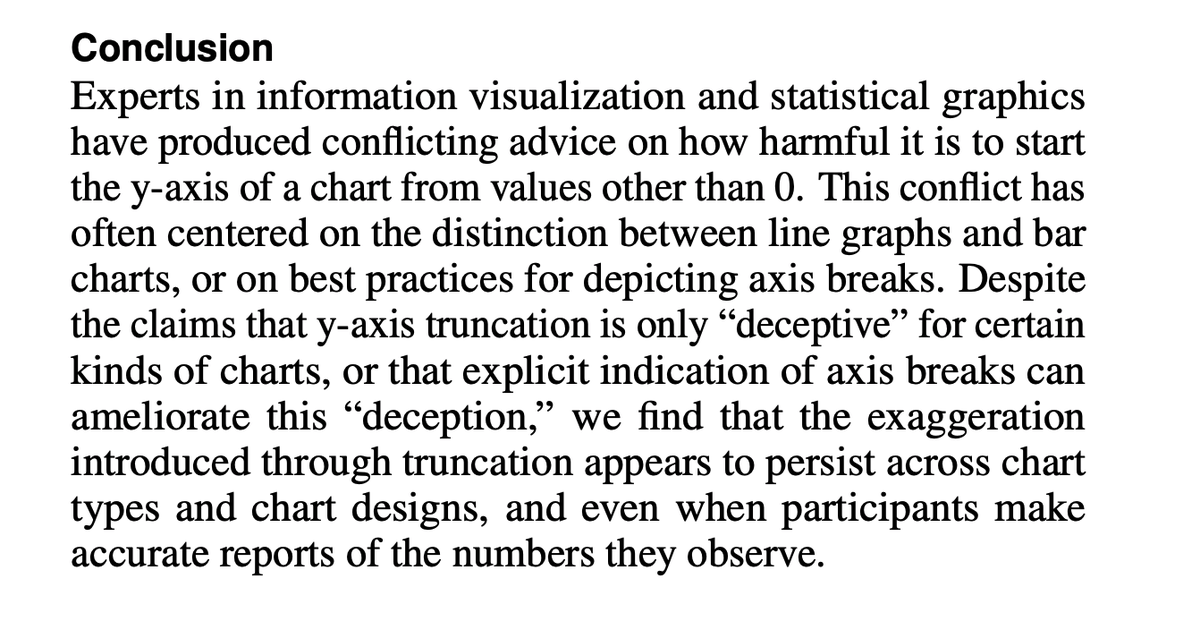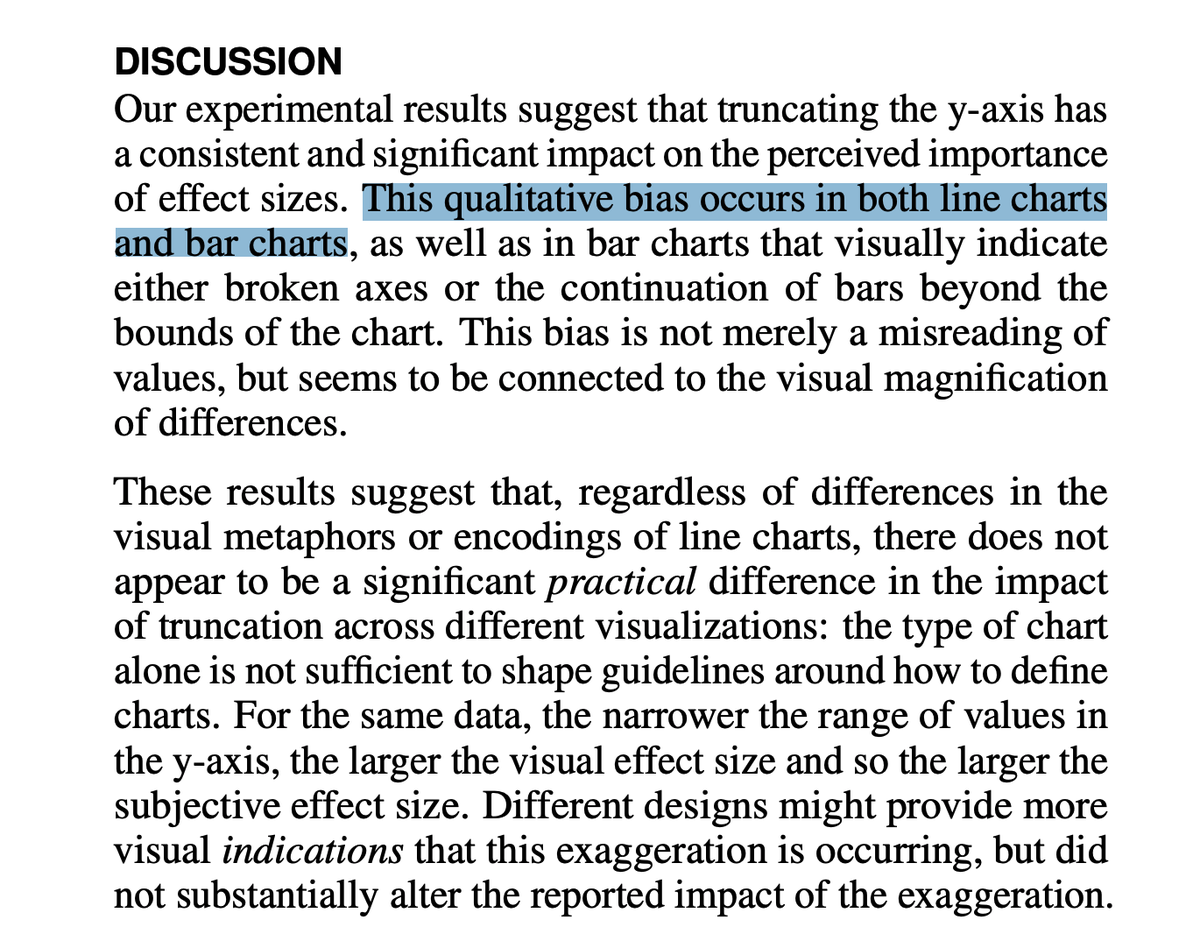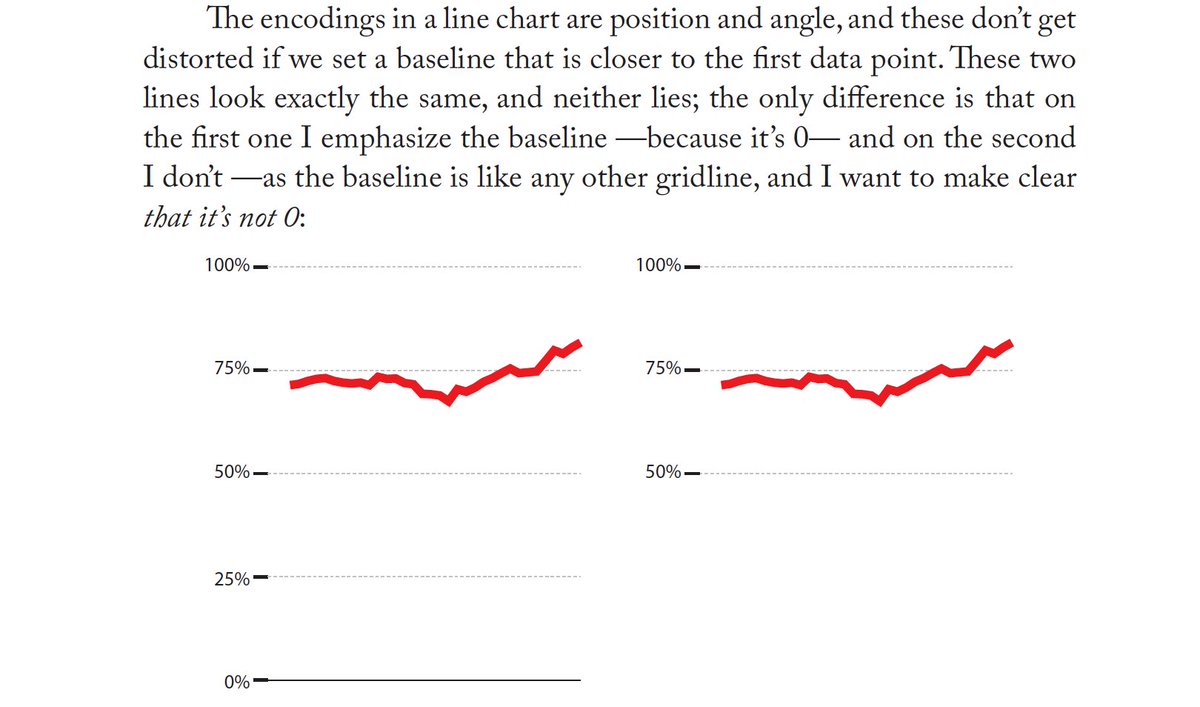Thread about this paper. First a quote: "Whether it is permissible to truncate may depend on task (relative versus absolute change, trends versus values) and on data semantics (meaningful versus non-meaningful baselines)"
1/x https://twitter.com/SteveFranconeri/status/1248298803091865605">https://twitter.com/SteveFran...
1/x https://twitter.com/SteveFranconeri/status/1248298803091865605">https://twitter.com/SteveFran...
2/x This essentially summarizes my conclusion in & #39;How Charts Lie& #39;: "There is no way for designers to relinquish the responsibility of considering effect size in their charts. We reject the unequivocal dichotomy of “honest” and “dishonest” charts."
(continued)
(continued)
3/x I still recommend to begin graphs that use height/length as encodings (bars, stacked area) at 0. Not because they are more or less misleading than others but, first, out of consistency and logic: if encoding is height/length then height/length should correspond to the data
4/x There are also considerations about how truncating axes may alter the aspect ratio of graphs (it doesn& #39;t necessarily happen when encoding is relative position)
5/5 So, going back to the first tweet in the thread: there are many variables to consider when making the decision as to whether, when, and why truncating an axis. Paper: https://research.tableau.com/sites/default/files/CHI-truncation-embedded.pdf">https://research.tableau.com/sites/def...

 Read on Twitter
Read on Twitter




